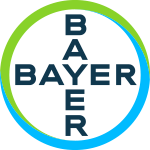In 2 recent surveys
Patients and HCPs alike reported a negative quality of life (QoL) impact of constipation1,2
Patient profiles are hypothetical and stories are for illustrative purposes only.
“The constipation makes me so uncomfortable, I almost can’t deal with customers. The stool softener did nothing for me, and the overnight stimulants gave me cramps.”
Constipation can cause employment issues.2 Start your patients on triple-action MiraLAX® sooner
In a survey of 557 patients in the Knowledge Networks Panel who reported chronic constipation2
~70% of people had difficulty working, and at least 1 in 10 missed work or school completely due to constipation2
In a recent survey of 300 gastroenterologists1,a

These mechanisms of action are the most important for OTC treatment of OC:
- Colon hydration
- Softening and increasing of stool volume
- Peristalsis that avoids urgency and cramping
and that MiraLAX® provides these more effectively than other OTC treatments
- 92% stated that they believe that MiraLAX® effectively relieves OC without harsh side effects such as bloating, cramping, gas, or urgencyc
- 2x as many GIs reported that MiraLAX® provides tolerable relief as reported the same for stool softeners and stimulantsc
- 90% said MiraLAX® is their most trusted OTC laxative and the one that provides the best balance of efficacy and tolerabilityd
aBased on a survey that asked 300 gastroenterologists to rate the important factors in choosing an OTC medication for adults with OC and how well MiraLAX® met those needs. HCPs selected from a set of options, based on their clinical experience. Survey details and data are available upon request.
b75% of GIs rated the degree of negative impact ≥5 on a scale of 1-7.
c79% of GIs rated the strength of their belief in the importance of this consideration ≥5 on a scale of 1-7.
dGIs rated the strength of their agreement with these statements ≥5 on a scale of 1-7.
Compare MiraLAX® with stimulant laxatives and stool softeners
- MiraLAX® promotes gentle peristalsis3 without harsh side effects (colonic nerve stimulation or metabolization by bacteria)4-6
- Stimulant laxatives forcefully stimulate colonic nerves, which may cause discomfort, cramps, and urgency7
- Stool softeners do not promote peristalsis3,7
Start your patients like Annie on MiraLAX® sooner:
Its triple action hydrates, softens, and promotes gentle peristalsis3,6,8
References: 1. Data on file, Bayer Healthcare. 2. Johanson JF, Kralstein J. Chronic constipation: a survey of the patient perspective. Aliment Pharmacol Ther. 2007;25:599–608 3. Andrews CN, Storr M. The pathophysiology of chronic constipation. Can J Gastroenterol. 2011;25(Suppl B):16B-21B. 4. DiPalma JA, DeRidder PH, Orlando RC, et al. A randomized, placebo-controlled, multicenter study of the safety and efficacy of a new polyethylene glycol laxative. Am J Gastroenterol. 2000;95(2):446-450. doi:10.1111/j.1572-0241.2000.01765.x 5. DiPalma JA, Cleveland MB, McGowan J, Herrera JL. A comparison of polyethylene glycol laxative and placebo for relief of constipation from constipating medications. South Med J. 2007;100(11):1085-1090. doi:10.1097/SMJ.0b013e318157ec8f 6. Hammer HF, Santa Ana CA, Schiller LR, Fordtran JS. Studies of osmotic diarrhea induced in normal subjects by ingestion of polyethylene glycol and lactulose. J Clin Invest. 1989;84(4):1056-1062. doi:10.1172/JCI114267 7. Fiorini K, Sato S, Schlachta CM, Alkhamesi NA. A comparative review of common laxatives in the treatment of constipation. Minerva Chir. 2017;72(3):265-273. doi:10.23736/S0026-4733.17.07236-4 8. Schiller LR, Emmett M, Santa Ana CA, Fordtran JS. Osmotic effects of polyethylene glycol. Gastroenterology. 1988;94(4):933-941. doi:10.1016/0016-5085(88)90550-1





